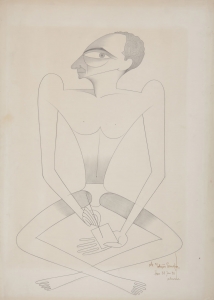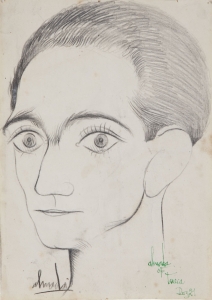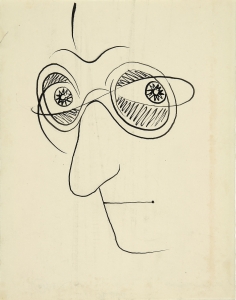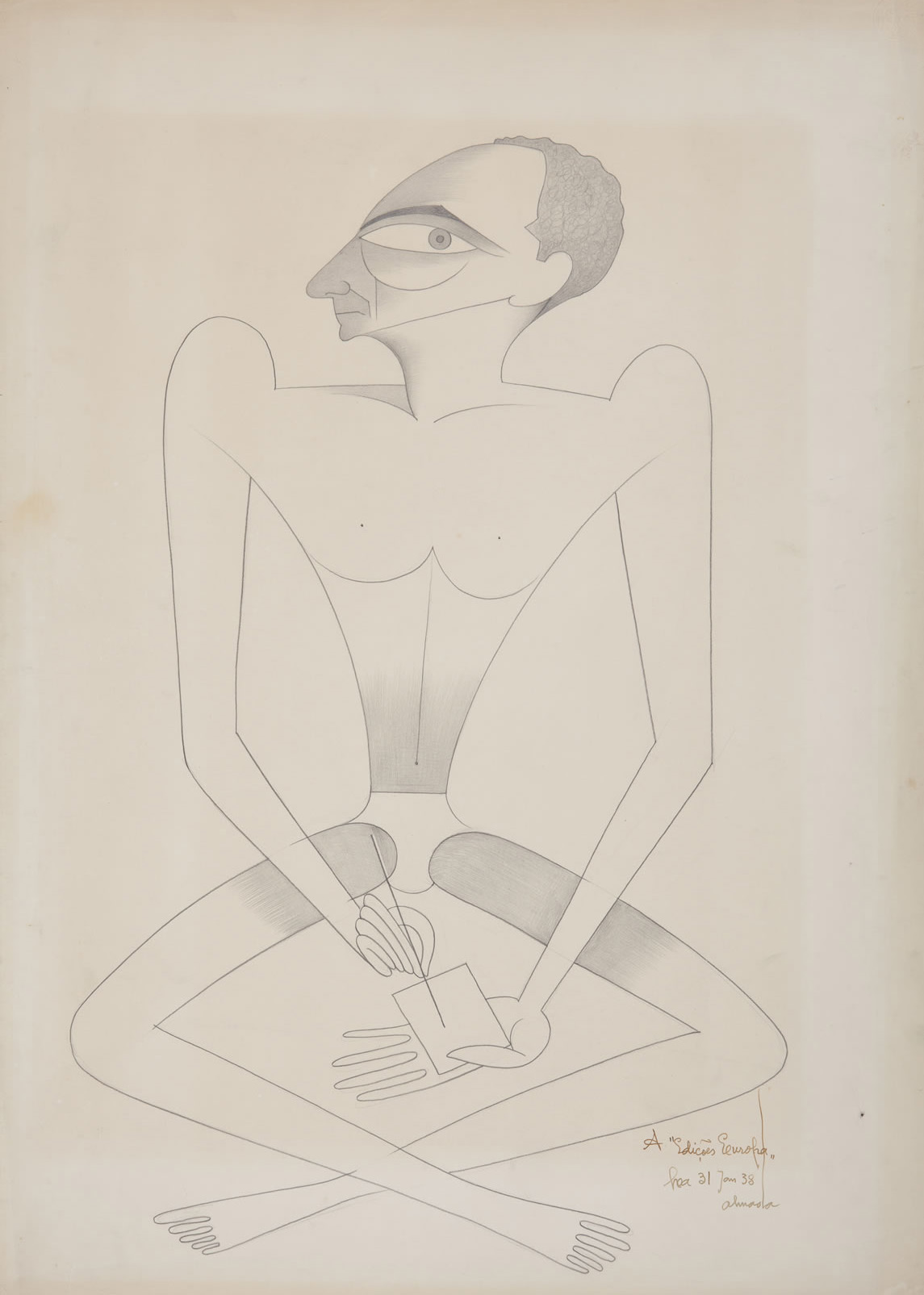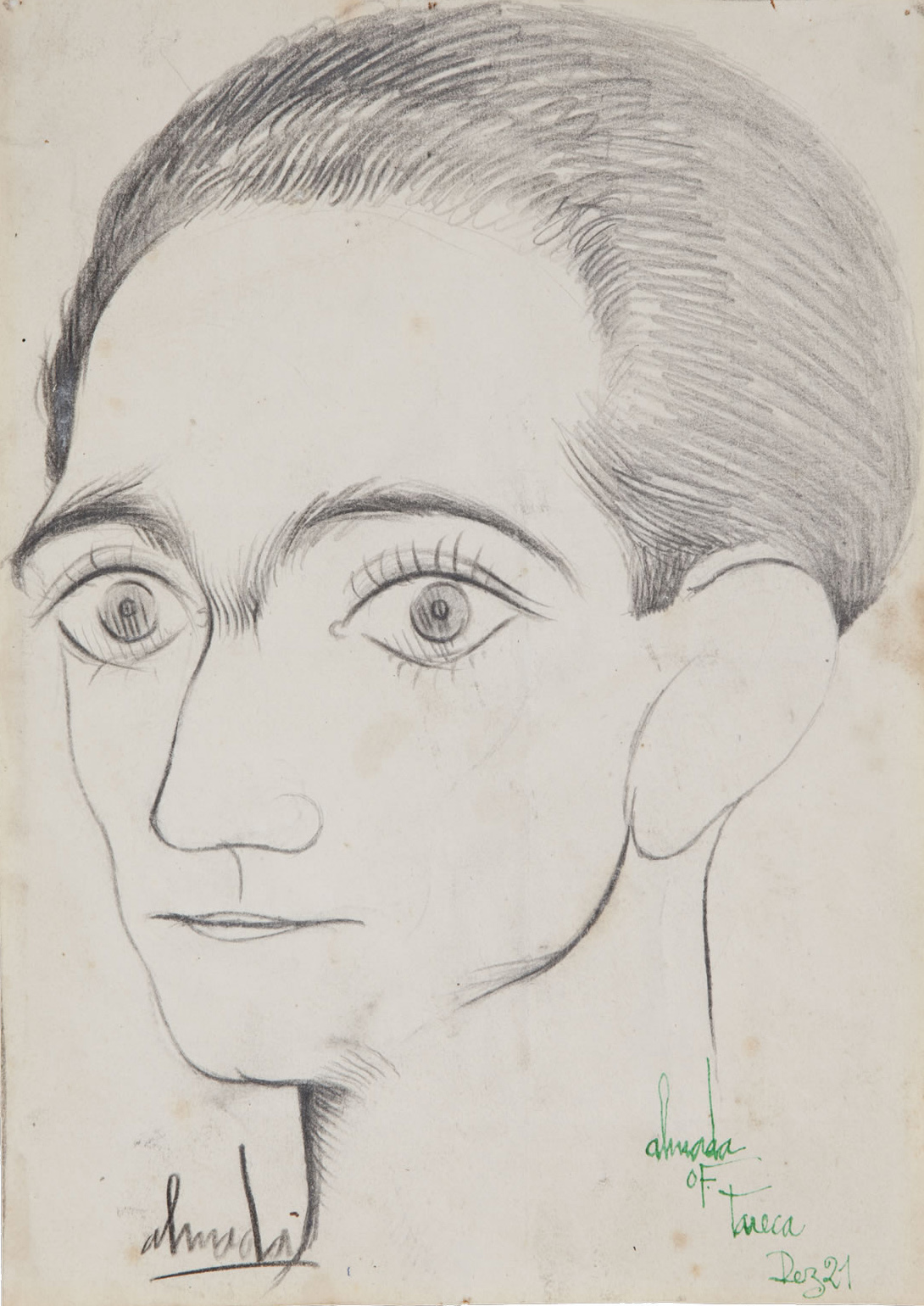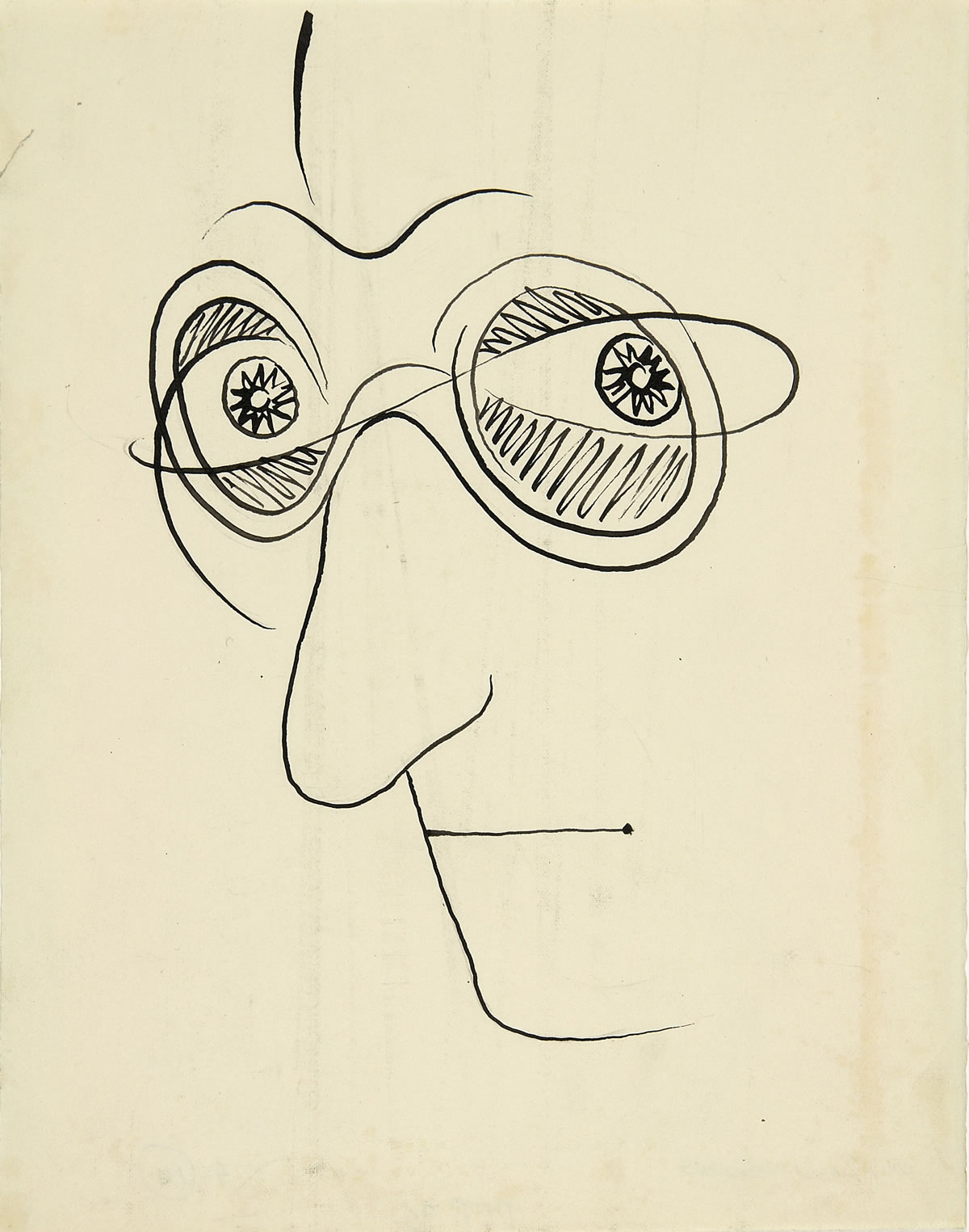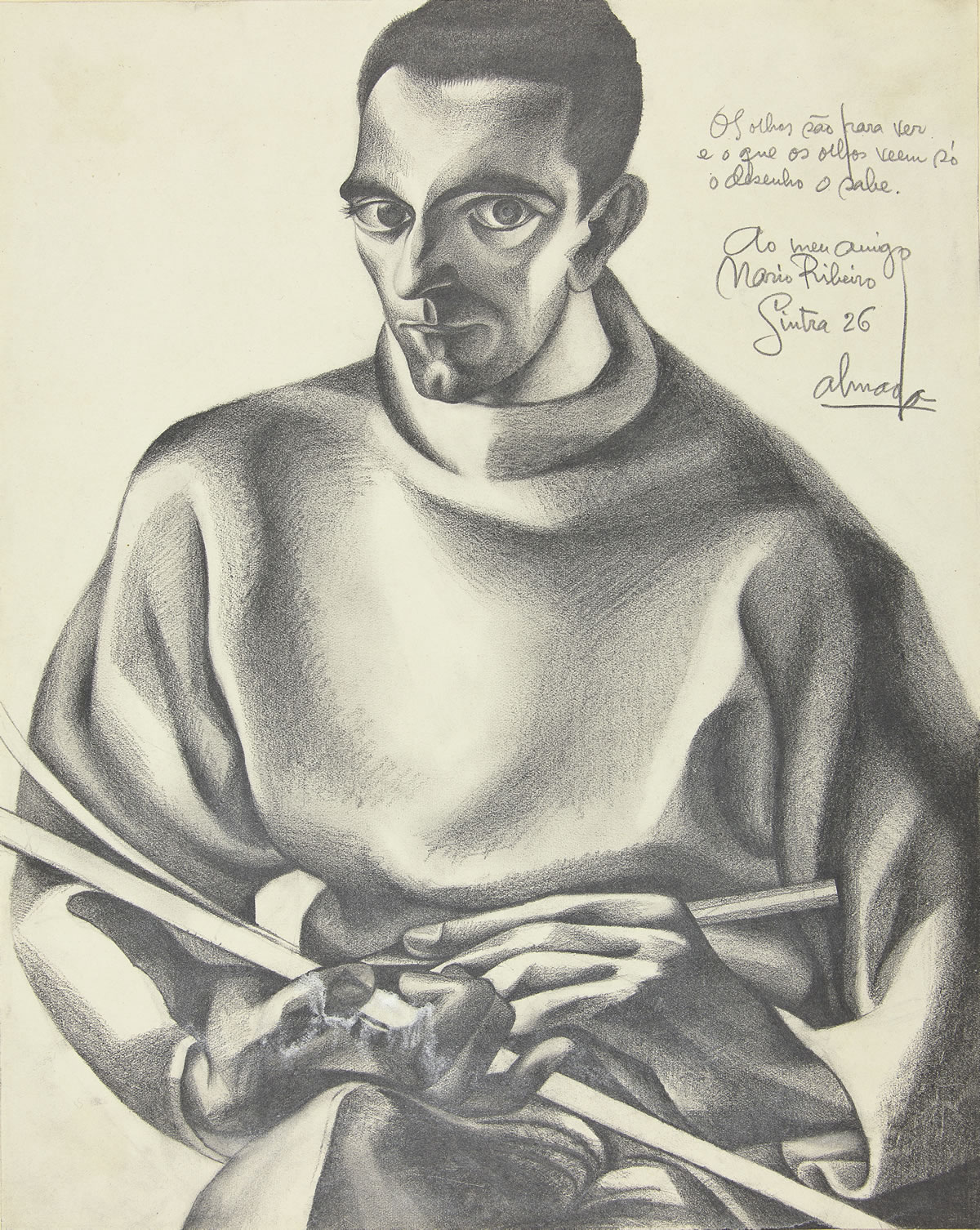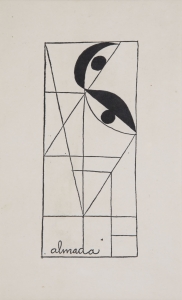

“My eyes are not mine, they are the eyes of our century!”
Almada continuously explored the self-portrait, assigning special significance to the representation of his eyes, also central to his writing. In K4 O Quadrado Azul [K4 The Blue Square] (1917) he proclaimed “my eyes are spotlights policing the infinite”; the title of the poem “O Menino d’Olhos de Gigante” [The Boy with the Eyes of a Giant] (1921) again refers to his enormous eyes; and in A Invenção do Dia Claro [The Invention of the Clear Day] (1921) it is written: “Notice my eyes, for they are not mine, they are the eyes of our century! The eyes that pierce through the back of everything”.
This physical attribute became a metaphor larger than mere identity: the eyes that devour knowledge; an interface for the apprehension of the world, for its artistic appropriation and transformation. The unmeasured eyes symbolised an aptitude for amazement and wonderment. This voluntary ingenuousness, as Almada put it, is shaped by the great quest for newness that is common to all avant-garde and modernist movements from the start of the 20th century. But to ignore the past often did not mean to reject it, contrary to what many proclaimed. Being modern meant instead looking at the past through eyes freed from centuries of historical prejudice. Depicting these eyes therefor expressed the modern attitude: the affirmation of the artist’s freedom of choice, liberated from the constraints of history and convention.

